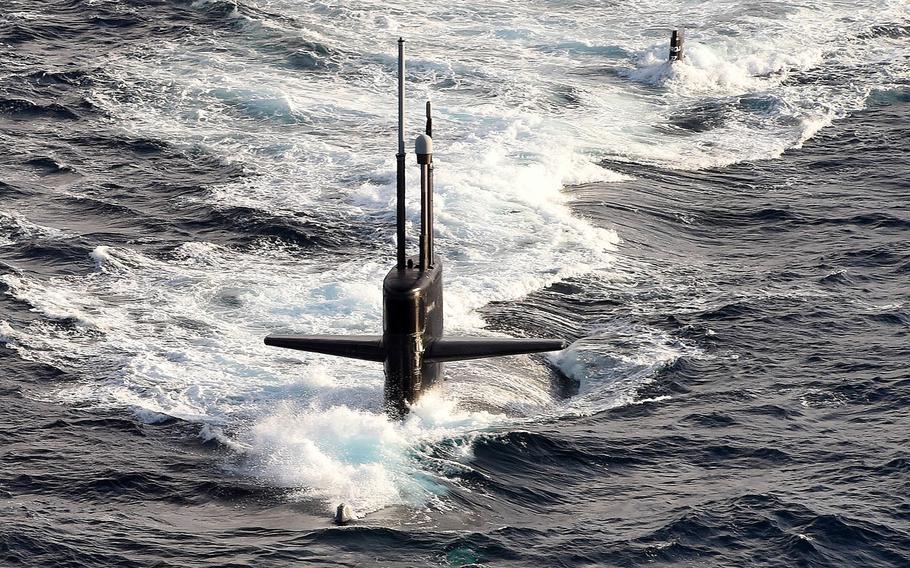
The Los Angeles-class attack submarine USS Helena transits the Atlantic Ocean in March 2016. (Rafael Marti/U.S. Navy )
WASHINGTON (Tribune News Service) — Plans by the U.S. Navy to deploy a nuclear submarine to Cuba this week were considered so routine, little thought was given to the move within the U.S. government — until the Biden administration learned of Russia’s plans to dock one of its own in Havana at the same time.
The Navy had planned for weeks to deploy the USS Helena, a nuclear-powered, fast- attack submarine, to the Guantanamo Bay Naval Base as “part of our routine naval activities,” one official with U.S. Southern Command, based in Doral, said.
But the discovery that Russia intended to send several combat vessels and the Kazan — one of its most advanced nuclear submarines — to the region for military exercises this week sparked a debate among Navy and administration officials whether to proceed with the Helena deployment, or to change or cancel it, two officials familiar with the matter told McClatchy and the Miami Herald.
“There was a discussion over whether to proceed,” one official familiar with the matter said.
Biden administration officials had already believed that Cuba approved Russia’s latest port call “at least in part because of Havana’s displeasure” over a similar event last year, in which a U.S. submarine visited the Guantanamo base, infuriating the Cuban government, one U.S. official said. Officials feared that a second visit, announced during the Russian exercises, could escalate tensions further.
Ultimately, the Navy argued that changing or canceling a U.S. military deployment to accommodate the movements of another power would set a bad precedent.
“We see no reason to alter previously planned, routine activity in response to Russian activity in the region,” said the Southcom official, who noted that Cuba was provided notice of Helena’s arrival.
The internal debate reflects sensitivities around a set of military maneuvers that would, in most other circumstances, be viewed as routine. The Cuban, Russian, and U.S. governments have all put out statements making clear that their actions are not intended to pose a threat to their adversaries.
Yet an increase in tensions between Moscow and Washington over U.S. support for Ukraine, and Russia’s decision to deploy naval combat vessels within 30 miles of U.S. shores, has contributed to the sense that these movements may be different.
Jake Sullivan, the U.S. national security advisor, told reporters on Wednesday that the current Russian exercises were “distinct” due to the inclusion of the Kazan.
“They have a submarine associated with this port visit that they have not had before,” Sullivan said, “But fundamentally, the notion that Russia takes some of its Russian naval assets and does a port visit to Havana is something that we’ve seen before.”
“It’s something we watch closely, carefully,” he added. “We will see how this unfolds in the coming days.”
The Russian flotilla could move south through the Caribbean, down to Venezuela, as soon as next week.
©2024 Miami Herald.
Visit at miamiherald.com
Distributed by Tribune Content Agency, LLC.